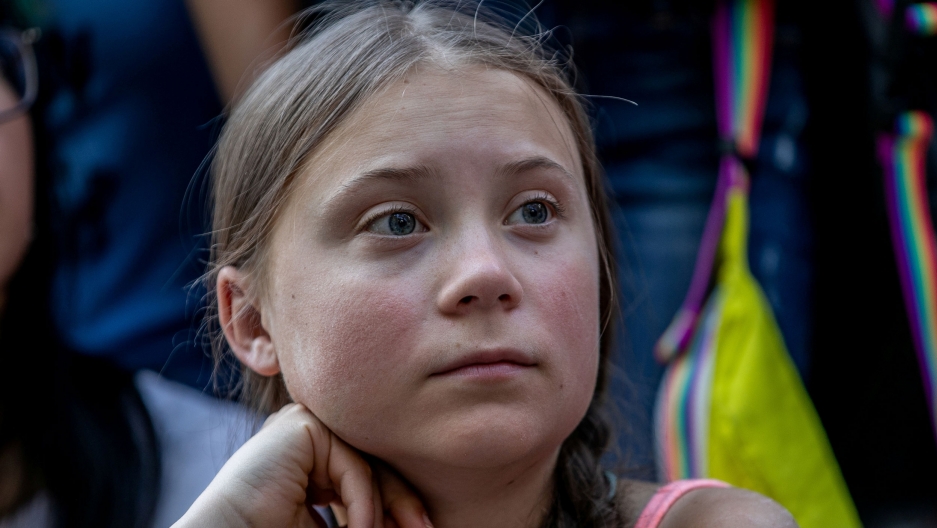This was like a downsized climate summit.
The world’s two best-know nature activists met, reflecting different eras: David Attenborough is 94; Greta Thunberg (shown here) is 18.
He started working on his first animal show a half-century before she was born; later, he began including warnings about climate change. “I’ve been promoting this for a long time,” he tells her in a PBS film. “But the big changes came when you spoke.” Now both have their say:
– She’s at the core of PBS’ “Greta Thunberg: A Year to Change the World,” which debuted on Earth Day and reruns at 8 p.m. on three Wednesdays. It’s a journey across North America and Europe, including that brief chat (shown in the May 5 episode) with Attenborough.
– And he’s … well, everywhere. “The Year the Earth Changed” arrived Friday (April 16) on Apple TV+; now Earth Day adds “A Perfect Planet: (8-10 p.m., Discovery), the three-part “Life in Color” (Netflix) and a marathon of rerunss (April 22-23, BBC America), many narrated by Attenborough.
The difference is that he spends more times pointing to the positives. Three decades ago, he tells her, “it looked like we might exterminate several species of whales”; now they’re on the upswing.
His films celebrate beauty, before reminding us of danger. “The Year the Earth Changed” even finds a benefit from the pandemic lockdown: “The Earth was allowed to breath again,” Attenborough says.
In India, we see the joy of a man who could see the Himalayas, for the first time in 30 years, because the air had cleared. Elsewhere, animals visited cities – a hippo lumbered, penguins strutted, a leopard suddenly strolled past a startled cameraman.
Animals adjust quickly, Attenborough says. “This year, they got the place to themselves.”
Thunberg’s approach has been angrier. “You have stolen my dreams and my childhood with your empty words,” she said in a United Nations speech at 16, adding: “For more than 30 years, the science has been crystal-clear. How dare you continue to look away, and come here saying you’re doing enough?”
That made a quick impact. “Now I have people’s attention; I don’t need to do this,” she says on PBS.
She planned to focus less on personal rage and more on the science facts. That led to her plan: Take a year off of school and travel the globe, gathering information and giving speeches.
Thunberg would start in northern Canada, head south by auto (with her father driving) and speak at a South American conference. Later, she would go through Europe and on to China.
That began as planned. At Canada’s Jaspar National Park, she saw a glacier that has shrunk in half in a century. In Paradise, Cal., she saw the aftermath of a fire that destroyed the town and killed 86 people. Problems grew, the film says: Half of the 10 worst wildfires in California history happened in 2020.
And then her plans transformed. Civil unrest caused the conference to move from South America to Spain. Thunberg – who skips planes because of their heavy fuel use – ended up on a three-week sailboat trip in November, the most turbulent time for the oceans.
Also, China was shut down by the pandemic. She and her dad returned home, to be with her mom and sister in Sweden. Her dad soon had COVID. “I’ve never been more sick in my life,” he said.
For Thunberg, this was a rare respite. “I don’t have one single friend,” she said, “except my sister and my dog.”
The global attention has been overwhelming, for someone who is on the autism spectrum. “I have Asperger (syndrome) and I don’t like people surrounding me …. I had to go to a special school, where there were limited to five people in my class.”
Then, at 15, she spent her school days sitting in front of Parliament, carrying a sign that said, in Swedish: “School strike for climate.”
She still carries the sign with her, but now she draws crowds. That includes adults in serious conferences and youths in passionate protests. “World leaders are behaving like children,” she said at a protest. “So it falls on us to be the adults in the room.”
